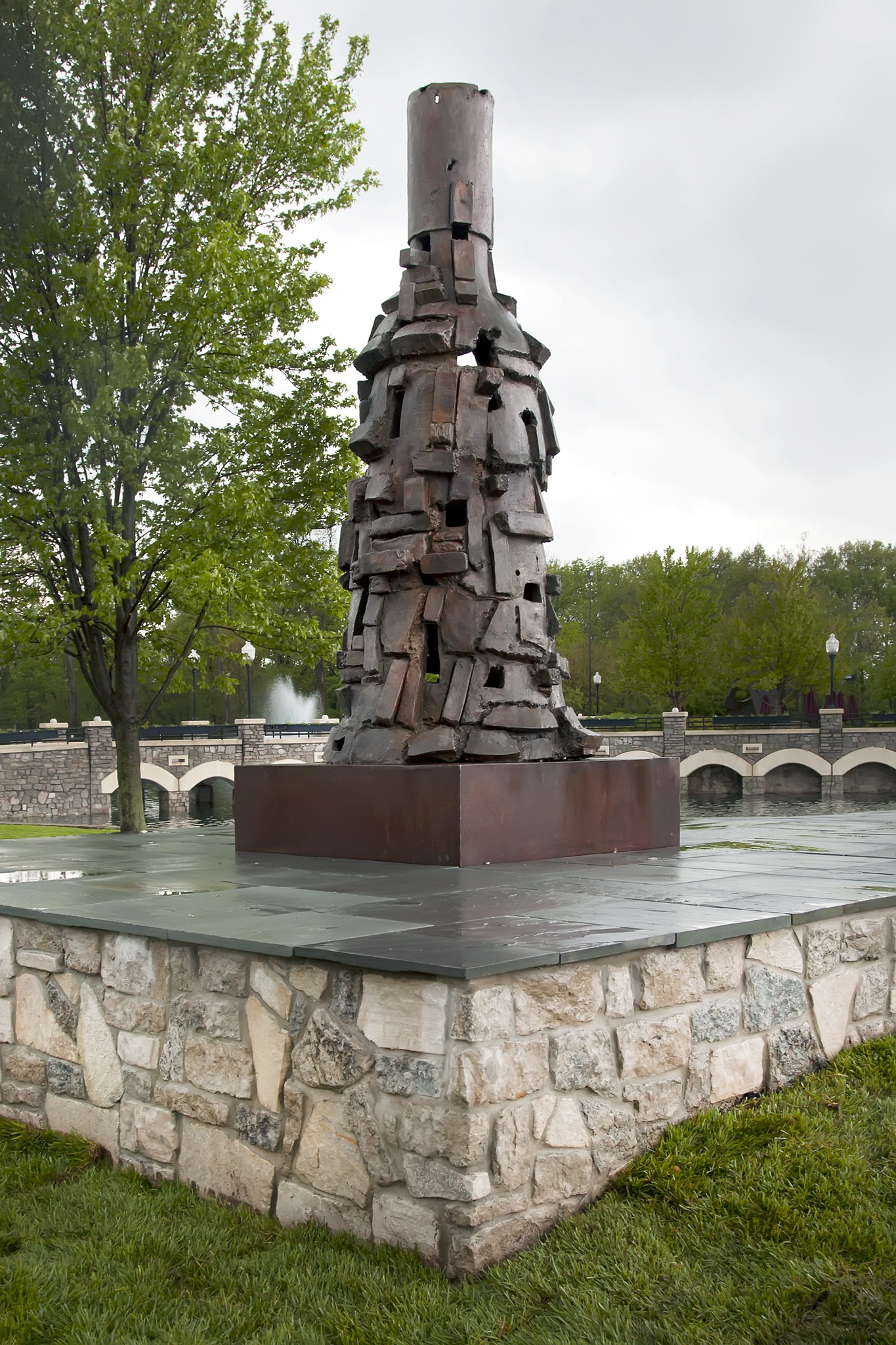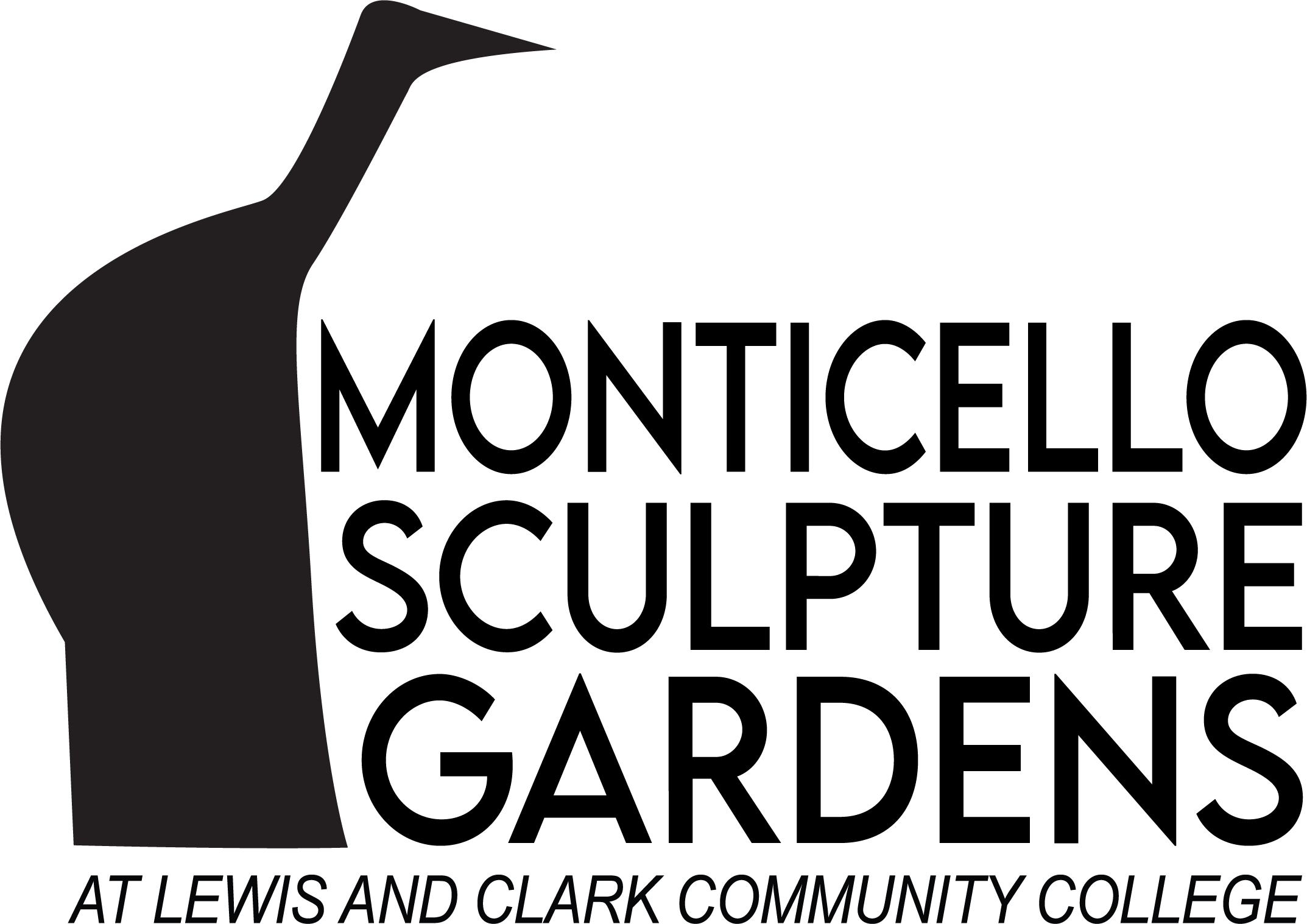Dedicated May 8, 2013, along with the Monticello Sculpture Gardens
 Standing tall over the crossroad between the historic and the contemporary campus of Lewis and Clark Community College, the 11½ foot tall bronze sculpture, "Crazy Horse," by Peter Voulkos, also stands as a powerful demarcation in contemporary sculpture.
Standing tall over the crossroad between the historic and the contemporary campus of Lewis and Clark Community College, the 11½ foot tall bronze sculpture, "Crazy Horse," by Peter Voulkos, also stands as a powerful demarcation in contemporary sculpture.
In 1953, Peter Voulkos was present at what became the crossroads of contemporary art in America. While teaching that summer at Black Mountain College in Asheville, NC, Voulkos met Josef Albers, John Cage and Merce Cunningham. Later, in the fall of 1953, Voulkos spent time in New York City where he met Jack Tworkov, Philip Guston, Franz Kline and Robert Rauschenberg. His exposure to the Abstract Expressionist Movement of the time altered his aesthetic concepts and marked the beginning of the transformation of ceramics from craft to art.
Breaking away from the functional tradition of ceramics, Voulkos began improvising the methods in which he worked in clay, much like the improvisational jazz riffs musicians developed in the mid 50s. He allowed the process of creativity to flow freely from the manipulation of the material as he brought about the exuberance of Abstract Expressionism to ceramics.
He emerged from this experience as a major player in the “Clay Revolution” that took place on the West Coast, becoming the single most pivotal ceramic artist working in America from the early 50’s through the end of the century. As a teacher at the Los Angeles County Art Institute, many of his students, including Paul Soldner, Robert Glover, James Melchert and Ron Nagle, emerged as significant artists in San Francisco and Los Angeles in the early 60s.
Voulkos also had a special relationship with a couple of the sculptors represented in the Monticello Sculpture Gardens collection. Two artists, Stephen DeStaebler and Joel Perlman, studied with Voulkos as undergraduates, while several others in the collection exhibited professionally with Voulkos on a number of occasions.
"Crazy Horse" is the last major bronze sculpture created by Peter Voulkos before he died. Working directly in wax with the foundry master Piero Mussi at Mussi Artworks Foundry in Berkeley, Calif., Voulkos was involved in the creation of every element of the sculpture before it was cast in bronze. Under his direct supervision at the foundry, each piece was welded in place, piece by piece as the sculpture rose to its full 11½ feet in height. Through this process, he was able to maintain the spontaneity he employed in his more widely recognized smaller ceramic works resulting in the hand formed gestural finish that became so identifiable of his work. No moulds were taken of the sculpture before it was cast, and no molds were taken after it was cast. The bronze sculpture "Crazy Horse" is a unique bronze casting.
One of a kind, "Crazy Horse" is the only piece Voulkos created in this manner and is also one of the largest in his body of work. With construction methods relating to the process used for hand built ceramic kilns and the architectural configuration of drum and stack kilns, the sculpture makes reference to the history of production ceramics with a shape that is similar to early beehive ovens or the bottle shaped kilns at the historic Staffordshire and Farnham potteries in England.
Peter Voulkos died on February 16, 2002. His artwork is on display in the permanent collections of the Smithsonian Institution in Washington, DC, the Metropolitan Museum of Art and the Museum of Modern Art, in New York City, and other major museums in the United States, Europe and Asia. He has had one person shows in museums throughout the country, including the Art Institute of Chicago and Museum of Modern Art in New York City.
Peter Voulkos was an American artist, born in 1924.
Through the generosity of Terry and Judy Cross, the Peter Voulkos sculpture "Crazy Horse" was purchased by the Lewis and Clark Community College Foundation from the Voulkos estate in 2012.
"Crazy Horse," 2002, cast bronze sculpture
- Height 124” (with Corten Steel base 140.5”), Width 53”, Length 45”
- Corten Steel Base Height 16.5” Width 60” x Length 60”


